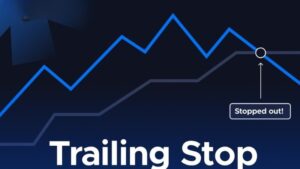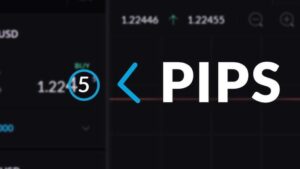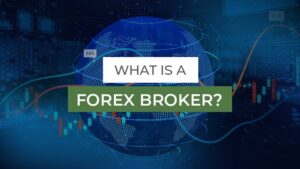Introduction: As gold prices repeatedly set new all-time highs, many investors are caught between the anxiety of missing out and the fear of buying at the top. However, when we look past the short-term volatility and delve into the underlying drivers, a bold yet clear conclusion emerges: this is far from the end. In fact, it may only be the prologue to a major structural bull market.
Based on a confluence of multiple structural factors, we believe gold is transitioning from a peripheral safe-haven asset to a core component of global asset allocation. Our year-end 2025 price target is $4,500 per ounce, and under certain scenarios, a challenge of the $5,000 mark is not out of the question.
1. An Irreversible Trend: The Central Bank Gold Buying Spree
To understand this gold bull market, one must first recognize an undeniable global force: the voracious appetite of the world’s central banks.
Since the major geopolitical turning point in 2022, central bank gold purchases have increased fivefold, according to data from Citibank. This is not a fleeting trend but a profound structural shift. The core driver stems from deep-seated concerns over the “weaponization of the U.S. dollar” and the subsequent need for diversification of reserve assets.
Central banks in emerging markets, in particular, are embracing gold at an unprecedented pace. Research from Goldman Sachs estimates that several large Asian central banks alone will need to maintain steady purchases for another 3-6 years to reach their ideal gold reserve ratios.
The implication is clear: for the next several years, hundreds of tons of stable, large-scale demand from sovereign buyers will provide a solid floor for the price of gold. This is an almost irreversible force.

2. The Sleeping Giant: Private Wealth Awaiting Entry
If central bank buying is the visible, “on the table” hand, then investment demand from the private sector is a “sleeping giant” with immense potential.
An often-overlooked fact, according to Goldman Sachs data, is that the total market size of global gold ETFs is equivalent to just 1% of the vast U.S. Treasury market. This means that even a marginal outflow of capital from the bond market could create enormous waves in the relatively small pool of the gold market.
Our model’s calculations reveal a stunning result: holding all else constant, if just 1% of the capital in the U.S. Treasury market were reallocated to gold, the price could be directly impacted, potentially challenging the $5,000 per ounce level.
In reality, data from Invesco shows that the current allocation to gold by private investors remains at a very low, single-digit level. If this allocation were to increase to a prudent defensive level of 5%, it could unleash a torrent of funds in the hundreds of billions of dollars into the gold market, with an incalculable impact on its price.
3. The Perfect Macro Storm: The Specter of Stagflation and Policy Dilemmas
The current macroeconomic environment is almost a “perfect storm” tailor-made for gold.
Analysis from Minsheng Securities indicates that the U.S. economy is progressively sliding towards a baseline scenario of “stagflation.” On one hand, the Atlanta Fed’s GDPNow model has lowered its forecast for Q2 economic growth to -2.4%, flashing recession signals. On the other hand, potential tariff policies could push the inflation level back up to 5-6%.
“Declining growth plus rising inflation” is a classic stagflationary mix and the most favorable macro environment for gold. Historical data research by CICC shows that in such a scenario, the probability of gold prices rising is as high as 79%, with an average (median) gain of 6%.
More importantly, once the Federal Reserve is forced to begin an interest rate-cutting cycle, the dual impact of a depreciating dollar and falling real interest rates will create a powerful tailwind for gold, further opening up its upside potential.
4. Learning from History: This Bull Market May Only Be Halfway Through Its Ascent
When we place this bull market in a historical context, we find that it may be younger than many assume.
Data from CICC compares several of gold’s major historical bull markets:
1971-1980: Lasted 8.4 years, with a cumulative gain of 1,976%.
1999-2012: Lasted 12.4 years, with a cumulative gain of approximately 600%.
Current Bull Market (since 2022): Lasted approximately 2.5 years, with a cumulative gain of about 110%.
Whether measured by duration or cumulative gains, the current bull market appears quite modest. Considering that we are in an era of unprecedented global change (a view from Minsheng Securities), there is reason to believe we may still be in the early or middle stages of this bull run. Our internal Gold Model 2.0 also indicates that gold’s long-term valuation anchor has systematically shifted upwards into the 3,000-5,000 range.
Conclusion: Now Remains a Prime Moment for Gold Allocation
Synthesizing these four structural drivers, we are highly confident in the future of gold. This is no longer a simple speculative play but a profound revaluation of its intrinsic worth.
Our scenario analysis for the coming year is as follows:
Baseline Scenario (60% probability): Geopolitical tensions persist, and central banks continue steady purchases. Year-end 2025 price target: $4,500.
Bull Scenario (30% probability): The U.S. economy enters a recession, prompting large-scale entry from private investors. Gold prices could challenge $5,000.
Bear Scenario (10% probability): A significant de-escalation in global geopolitical tensions occurs, and major economies show marked improvement in fiscal discipline. Gold could pull back to the 3,500-3,800 range.
In summary, gold is striding from a peripheral asset to a mainstream allocation, thanks to its three irreplaceable attributes: zero credit risk, its hedge against currency depreciation, and its safe-haven status in times of geopolitical turmoil. For rational investors, every technical pullback caused by short-term negative news should be viewed as a valuable window for strategic entry or accumulation.
While Bridgewater Associates suggests a cap of 15% for gold allocation, we believe increasing allocation to a 5-10% range is a prudent move to navigate the current uncertainties.
We are officially confirming our year-end 2025 price target for gold at $4,500 per ounce, which represents an approximate 25% upside from current levels.
The era of gold has truly begun.



